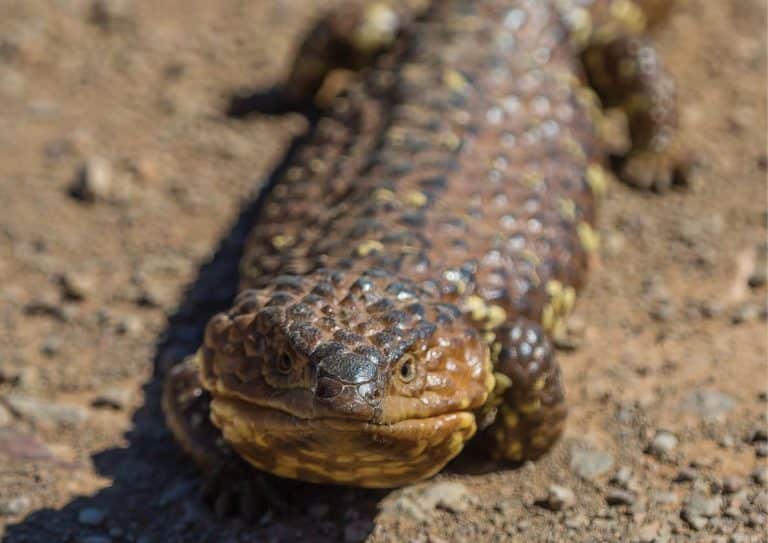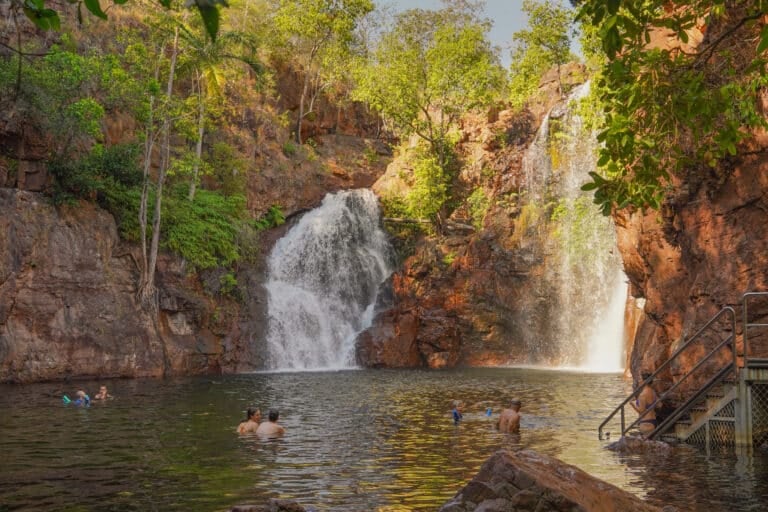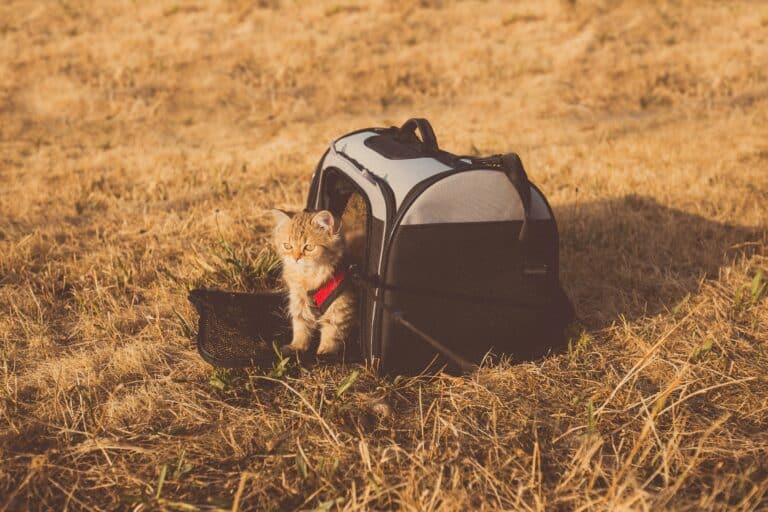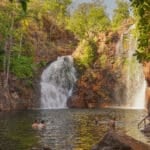Bobtail, pinecone, stumpy-tail, double-headed – meet the lizard with the highest number of common names in Australia.
By Morgan Lane By Scott Mason
Tiliqua rugosa, more commonly known as the Shingleback lizard, is the bulkiest of the blue-tongue lizard family – identifiable by the stockier body build. The Shingleback sports a tail that bears remarkable resemblance in size and shape to the head of the lizard (instead of a longer and thinner tail like those seen on other blue-tongue lizards). Used as a defence mechanism, the thicker tail is designed to confuse predators while also acting as a storage area for fat reserves.
The Shingleback is found in arid regions of Australia – areas of open country and dry scrubland, using grasses, fallen timber and leaf litter as shelter. Dark brown in colour, the Shingleback has large rough scales, often dotted with yellow spots.
Its blue tongue contrasts against a bright pink mouth lining, which is displayed when threatened. The lizard will widely open its mouth, sticking out the blue tongue while hissing towards the predator. Flattening out its body assists the Shingleback to appear larger to a predator; and the lizard may bite if provoked.
Shinglebacks primarily live alone until mating season between September and November, where the genders will reunite as monogamous pairs. It is not uncommon for a pair to seek each other out over several mating seasons. The omnivore species primarily eats vegetation and flowers but will often eat snails and other small insects. Predators of the Shingleback include large birds, snakes such as the eastern brown and red-bellied black snake, as well as feral dogs and cats.
These striking lizards can often be found basking in the sun as they do not generate their own body heat… instead using the surrounding environment to increase their body temperature.












